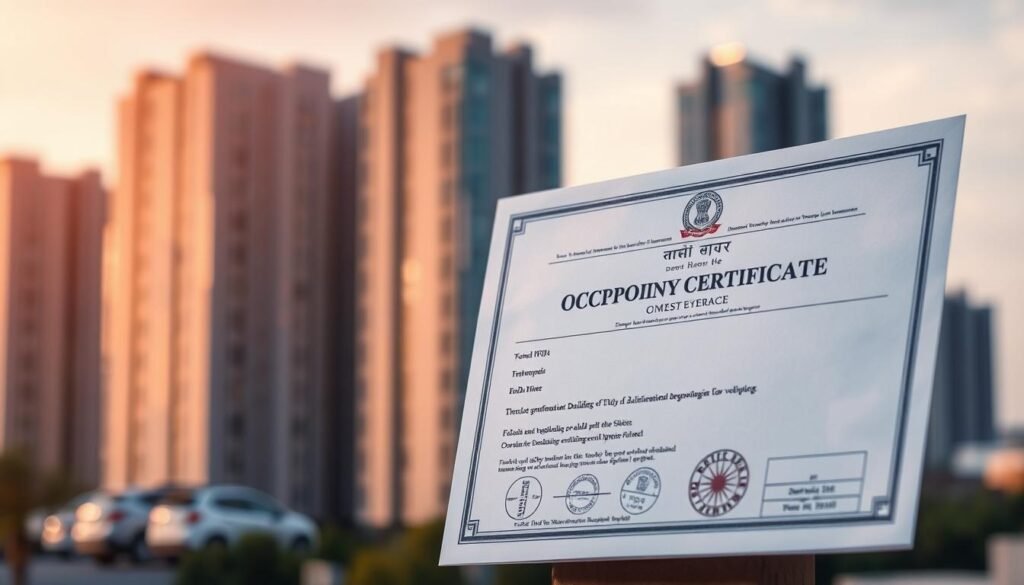Can we cut red tape without risking safety when the state eases rules for family homes?
We explain a timely policy change that reshaped how homeowners on 1,200 sq. ft. sites move from construction to occupancy. The Karnataka government responded to a Supreme Court order that made occupancy certificates mandatory for utility connections, which left thousands waiting for power and other services.
Under Section 241(7) of the Greater Bengaluru Governance Act, the state notified a targeted exemption for ground-plus-two or stilt-plus-three dwellings on eligible plots. This limited relief aims to speed up plan approvals and reduce backlog while keeping safety checks and sanctioned plans intact.
We outline what this means for timelines, plan clearance via Nambike Map, and how occupancy and certificate needs now differ between modest homes and larger or commercial projects.
News update: Karnataka exempts small residential plots from occupancy certificates within Greater Bengaluru
We explain a recent government decision that affects owners of standard 30×40 sites. The karnataka government has issued an exemption so qualifying houses can move faster from construction to use.
The decision at a glance: 30×40 sites (1,200 sqft), ground-plus-two or stilt-plus-three floors
The exemption applies to individual houses on plots 1,200 sq ft. Homes that are ground-plus-two or stilt-plus-three floors are covered. This change aims to ease delays for many houses while keeping key safety checks intact.
Legal basis and authority: Section 241(7) of the Greater Bengaluru Governance Act, 2024
Section 241(7) empowers the greater bengaluru authority to exempt categories from occupancy certificates. The urban development department and development department issued the notification after cabinet approval.
Why now: Supreme Court order, OC backlog, and the Urban Development Department’s move
The move followed a supreme court order that made OCs necessary for utility connections. A backlog of more than 1 lakh BESCOM requests pushed the govt to act. Officials say this is a practical, time-bound relief for compliant homeowners.
What officials clarified: Relief for homeowners, but not a free pass for violations
Officials, led by Additional Chief Secretary Tushar Giri Nath, stressed the exemption is not a waiver for noncompliance. High-rises, mixed-use and larger buildings bengaluru remain subject to OCs and enforcement.

| Scope | Size | Allowed floors | Authority |
|---|---|---|---|
| Individual houses | 30×40 (plots 1,200) | Ground + 2 or stilt + three floors | Section 241(7), Greater Bengaluru Authority |
| Excluded | Larger sites | High-rises / mixed-use | OC regime still applies |
| Purpose | Residential buildings | Speeds service connections | Notified by urban development department |
building regulations small plots bangalore: thresholds, exemptions, and what still requires an OC
We set out clear thresholds so owners can self-check eligibility for the recent exemption. The greater bengaluru authority fixed the benchmark to speed up service connections while protecting safety checks.

Exempted within Greater Bengaluru: individual houses on plots up to 1,200 sq. ft.
Within greater bengaluru, the exemption applies to individual houses on plots 1,200 sq. ft. or less. Eligible designs are capped at two floors above ground or a stilt plus three floors.
If your standalone house matches the sanctioned plan and stays within size and height limits, you are likely exempted from obtaining occupancy certificates for utility connections.
Still mandatory: high-rises, commercial, mixed-use, or buildings beyond size/height limits
OC checks remain for larger residential buildings, high-rises, commercial and mixed-use developments. Any project that exceeds plots 1,200 or adds unauthorized floors will face the usual certificate requirement.
- Keep sanctioned plans, structural and fire documents handy.
- Unauthorised changes can nullify an exemption and trigger enforcement.
- The BBMP and bengaluru authority set these limits after the court‑driven OC order to balance oversight and administrative feasibility.
| Scope | Threshold | OC status |
|---|---|---|
| Individual houses | Plots 1,200; two floors / stilt + three floors | Exempted from occupancy certificate |
| Large/mixed projects | Above plots 1,200 or higher than allowed floors | OC mandatory |
| Non-conforming works | Extensions or usage changes | OC or enforcement applies |
How we stay compliant: plans, approvals, and obtaining services without an OC
Here’s how we keep approvals and utility access smooth when an OC is not mandatory for qualifying homes.

Plan approvals and compliance
We file our plans through Nambike Map to get a sanctioned plan quickly. Eligible submissions often clear in about 15 days. That helps our construction scheduling and contractor mobilization.
We keep a compact file on site: sanctioned plans, structural certificates, and dated site photos. These documents prove setbacks, height, and approved floors match work in progress.
Access to utilities post-exemption
Even without OCs, power and water providers may still check basic compliance. BESCOM or BWSSB might ask for sanctioned drawings, identity proof, and site photos before granting connections.
- Reference the Urban Development Department notification under Section 241(7) when communicating with officials.
- Upload every plan revision to the portal and mirror the latest set on site to avoid mismatches.
- Keep contact details ready for fast replies to any provider queries.
| Check | Who | Why |
|---|---|---|
| Sanctioned plans | Utilities / officials | Confirm as-built matches approved design |
| Structural certificates | Officials | Ensure safe construction of permitted floors |
| Site photos | Providers | Speed service connection without delay |
Conclusion
This move gives qualifying homeowners a clear path to secure services faster while keeping basic safety checks intact. The targeted exemption offers immediate relief and lets us move ahead with confidence when we meet thresholds and sanctioned plans.
The karnataka government issued this decision after cabinet deliberations under statutory authority. We should treat the exemption as a time‑bound tool, not a waiver of responsibility.
To benefit, we verify eligibility, finalise the sanctioned plan, and keep a tidy compliance file. That helps with obtaining occupancy certificate alternatives for utilities and avoids delays.
We will watch for further govt updates and keep advising homeowners to prioritise documentation and transparent engagement with providers.




